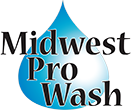As a home owner, you are aware that your home is probably your largest investment and that taking care of it is an important necessity in maintaining its value. Unlike the inside of your home, the exterior is exposed for all to see, and it can reflect heavily on your image. Maintaining great curb appeal is pretty high up on the maintenance budget. Lawn care services, landscape maintenance, painting projects, and exterior cleaning are all definite home improvements that give you the best bang for your buck. There is nothing that screams curb appeal more than a good house cleaning, fresh mulch, trimmed shrubbery and a thick green lawn.
One of the biggest eye sores and curb appeal killers is roof algae. Roof algae appear as black stains or streaks on your roof’s shingles. It can really take away from the beauty of an otherwise gorgeous home. So what can be done about these unsightly black streaks? We will answer this question and some of the other most frequently asked questions about roof cleaning.
Q: Can this roof alga be removed?
A: The good news is yes. Roof cleaning is a service offered by many professional exterior cleaning companies. The roof alga can be killed and removed safely to restore your roof’s appearance.
Q: Will cleaning my roof damage the shingles?
A: When the wrong methods are used, the answer is yes. Inexperienced contractors or home owners can easily damage shingles by removing excessive amounts of shingle granules, which are there to protect the shingles. The main culprit of roof cleaning damage is using too much water pressure to blast the shingles clean. Never allow a pressure washer to be used on your roof!
Q: So, how can the shingles be cleaned without causing damage?
A: By using the low pressure methods recommended by the shingle manufacturers themselves. The Asphalt Roofing Manufacturers Association, GAF, and Owens Corning have all suggested cleaning methods and solutions to clean roofs suffering from roof algae. They recommend using a low pressure chemical application followed by a low pressure rinse.
Q: What is the solution that will be used on my shingles?
A: The proper cleaning solution that is recommended by ARMA, GAF, and Owens Corning is a bleach- based roof cleaner. This type of cleaner is effective in killing the algae when applied with low pressure. A light rinse is then needed to wash the dead algae off the roof to restore its original appearance.
Q: Do some of the other lye or sodium hydroxide-based roof cleaners work well?
A: Unfortunately, they do not. The shingle manufacturers do not recommend these products because they are not very effective. They only work when used in conjunction with excessive pressure from a pressure washer, which leads to lessened longevity of the roof. When not used with pressure, some of these products even state on the label that the roof may take 2-3 months to begin appearing clean after an application, and in some cases more than one application is necessary.
Q: Will the bleach-based products harm my landscaping?
A: It can when handled improperly; after all, roof algae are plants. You’ve probably used bleach before when doing laundry, right? Would you give the same gallon jug of bleach to a 4 year-old and tell them to do the whites with it? Of course you wouldn’t; because in the wrong hands it can be harmful either to them or your clothes. Well, it’s the same thing with roof cleaning. This is why it is important to let a roof cleaning professional clean the roof for you. They will know how to handle the cleaner to protect themselves and your property from damage.
Q: How long will my roof stay clean?
A: There are some biocides and sealers on the market that claim to keep the algae away for good, but their test results are very limited so no one really knows. The best thing to do after getting your roof cleaned is to sign up on the cleaning company’s maintenance plan. For a fraction of the original cost they will come out every year or two and give your roof a maintenance coat so the algae doesn’t return.
Q: When I do get a new roof, are algae-resistant shingles effective?
A: Well, they call them algae-resistant (not algae-proof) for one simple reason; they help in eradicating the roof algae problem but they aren’t a full proof answer (not yet anyway). As a roof cleaning contractor, I have seen algae-resistant shingles suffering from roof algae, so a low pressure roof cleaning was still necessary.
